 More Commentaries for the Music of Blood, Sweat and Tears
More Commentaries for the Music of Blood, Sweat and Tears
More Outlier Pressings We’ve Discovered
This commentary was written about ten years ago and updated more than a few times since.
A while back we did a monster-sized shootout for Blood, Sweat and Tears’ second release, an album we consider THE Best Sounding Rock Record of All Time.
In the midst of the discussion of a particular pressing that completely blew our minds — a copy we gave a Hot Stamper grade of A with Four Pluses, the highest honor we can bestow upon it — various issues arose, issues such as: How did this copy get to be so good? and What does it take to find such a copy? and, to paraphrase David Byrne, How did it get here?
- We no longer give Four Pluses out as a matter of policy, but that doesn’t mean we don’t come across records that deserve them from time to time.
- Nowadays we usually place them under the general heading of Breakthrough Pressings. These are records that, out of the blue, reveal to us sound that fundamentally changes what we thought we knew about these familiar recordings.
- When this pressing (or pressings) landed on our turntable, we found ourselves asking “Who knew?“
- Perhaps an even better question would have been “How high is up?”
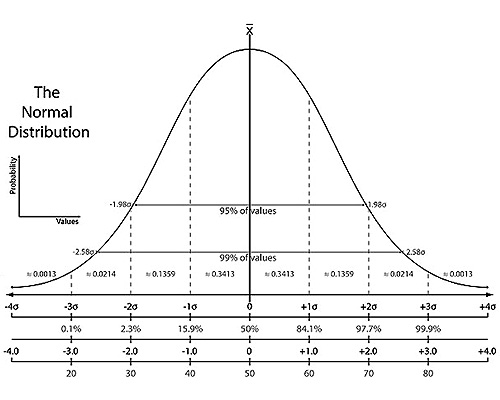
Which brings us to this commentary, which centers around the concept of outliers.
Wikipedia defines an outlier this way:
In statistics, an outlier is an observation that is numerically distant from the rest of the data.
In other words, it’s something that is very far from normal. In the standard bell curve distribution pictured below, the outliers are at the far left and far right, far from the vast majority of the data which is in the middle.
In the world of records, most copies of any title you care to name would be average sounding. The vertical line in the center of the graph shows probability; the highest probability is that any single copy of a record will be at the top of the curve near the middle, which means it will simply be average. The closer to the vertical line it is, the more average it will be. As you move away from the vertical line, the data point — the record — becomes less and less average. As you move away from the center, to the left or the right, the record is either better sounding or worse sounding than average.
Hot Stampers are simply those copies that, for whatever reason, are far to the right of center, far “better” than the average. And as the curve above demonstrates, there are a lot fewer of them than there are copies in the middle.
Measuring the Record
Malcolm Gladwell has a bestselling and highly entertaining book about outliers which I recommend to all. Last year I read The Black Swan (or as much of it as I could stand given how poorly written it is) which talks about some of these same issues. Hot Stampers can be understood to a large degree by understanding statistical distributions. Why statistics you ask? Simple. We can’t tell what a record is going to sound like until we play it. For all practical purposes we are buying them randomly and “measuring” them to see where they fall on the curve. We may be measuring them using a turntable and registering the data aurally, but it’s still very much measurement and it’s still very much data that we are recording.
No Theory, Just Data
Many of these ideas were addressed in the recent shootout we did for BS&T’s second album. We played a large number of copies (the data), we found a few amazing ones (the outliers), and we tried to determine how many copies it really takes to find those records that sound so amazing they defy not only conventional wisdom, but our understanding of records per se.
We don’t know what causes these records to sound so good. We know ’em when we hear ’em and that’s pretty much all we can say we really know. Everything else is speculation and guesswork.
We have data. What we don’t have is a theory that explains that data.
And it simply won’t do to ignore the data because we can’t explain it. Hot Stamper Deniers are those members of the audiophile community who, when faced with something they don’t want to be true, simply manufacture reasons why it can’t or shouldn’t be true.
That’s not science. Practicing science means following the data wherever it leads. The truth is found in the record’s grooves and nowhere else. If you don’t think record collecting is a science, you’re not doing it right.
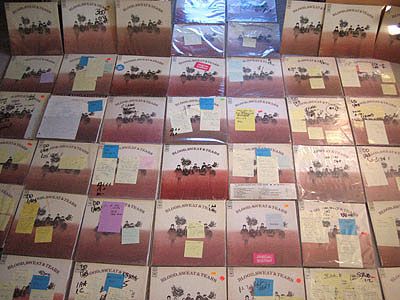 Ignoring Outliers
Ignoring Outliers
Wikipedia has a good line about ignoring outliers. Under the heading of Caution they write: “… it is ill-advised to ignore the presence of outliers. Outliers that cannot be readily explained demand special attention.” Here here.
Now let’s see where the grooves for Blood, Sweat and Tears’ second album led us. They demanded special attention and by god we gave it to them.
The Grooves
We noted some new qualities to the sound that we would like to discuss; they’re what separated the men from the boys this time around. What we learned can be summed up in a few short words: it’s all about the brass. Let me give you just one example of how big a role the brass plays in our understanding of this recording. The best copies present a huge wall of sound that seems to extend beyond the outside edges of the speakers, as well as above them, by quite a significant amount. If you closed your eyes and drew a rectangle in the air marking the boundary of the soundscape, it would easily be 20 or 25% larger than the boundary of sound for the typically good sounding original pressing, the kind that might earn an A or A Plus rating.
Size Matters
The effect of this size differential is ENORMOUS. The power of the music ramps up beyond all understanding — how could this recording possibly be this BIG and POWERFUL? How did it achieve this kind of scale? You may need 50 copies to find one like this, which begs the question: why don’t the other 49 sound the way this one does? The sound we heard on the Four Plus copy has to be on the master tape in some sense, doesn’t it? Mastering clearly contributes to the sound, but can it really be a factor of this magnitude? Intuition says no. More likely it’s the mastering of the other copies that is one of the many factors holding them back, along with worn stampers, bad stampers, bad metal mothers, bad plating, bad vinyl, bad needles and all the rest — all of the above and more contributing to the fact that the average copy of this album is just plain bad news.
Conventional Wisdom
Any reason you like for why a record doesn’t sound good is as valid as any other, so you might as well pick one you are comfortable with; they’re all equally meaningless. Of course the reverse of this is just as true: why a record sounds good is anyone’s guess, and a guess is all it can ever be.
People like having answers, and audiophiles are no different from other people in this respect. Since there are no answers to any of these questions, answers in this case being defined as demonstrable conclusions based on evidence gained through the use of the scientific method, most people, audiophiles included, are happy — if not better off — making up the answers with which they are most comfortable.
This is precisely why the term Conventional Wisdom was coined, to describe the easy answers people readily adopt in order to avoid doing the hard work of actually finding out the truth.
Do You Need Fifty?
The short answer this time around is Yes, you need fifty. We had one Four Plus Side One and one Four Plus side two, on two different copies obviously, and I would say we had pretty close to fifty copies in our data pool if you count the first round needle-drop rejects, of which there were probably thirty or more I would guess, with more than fifteen making the cut for the final rounds. Forty to fifty, that seems to be about the right number.
The Recipe or the Pudding?
Fortunately for us we have more than just opinions; we have records. Our records are really all we need to make our case; in fact they do a pretty good job of making it for us, week in and week out, Hot Stamper sales having doubled or almost tripled over the last two years. [From 2004 to 2006.]
The truth is that our opinions, like any opinions, right, wrong or somewhere in between, are entirely superfluous. Anything other than the actual sound captured in the grooves of the record we are selling is of almost no consequence. That sound, in those grooves, cannot be denied. No amount of commentary, for or against, will change it in any way.
That fact apparently won’t shut us up, as you can see by the length of this commentary, but this is precisely what we referred to above when we mentioned “sharing” with you, our readers, the experiences we had on our — how to describe it — journey of discovery.
We’re not selling recipes; we’re selling pudding, and this is some mighty fine tasting pudding if we don’t say so ourselves. Blood, sweat and tears as ingredients may not strike you as especially mouthwatering, but somehow the end result, in this case anyway, turned out to be unusually satisfying.
Who can explain why this pudding tastes so good? Not us, that’s for sure. We can name it though. It’s an outlier. We prefer to call them Hot Stampers, but outlier works too.
(more…)



 More Commentaries for the Music of Blood, Sweat and Tears
More Commentaries for the Music of Blood, Sweat and Tears


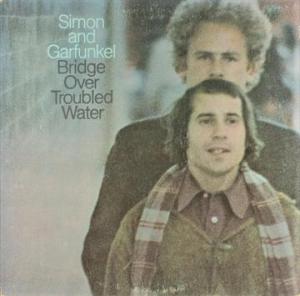

 More of the Music of Paul Simon
More of the Music of Paul Simon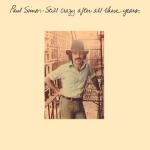
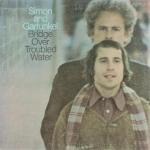 More of the Music of Simon and Garfunkel
More of the Music of Simon and Garfunkel